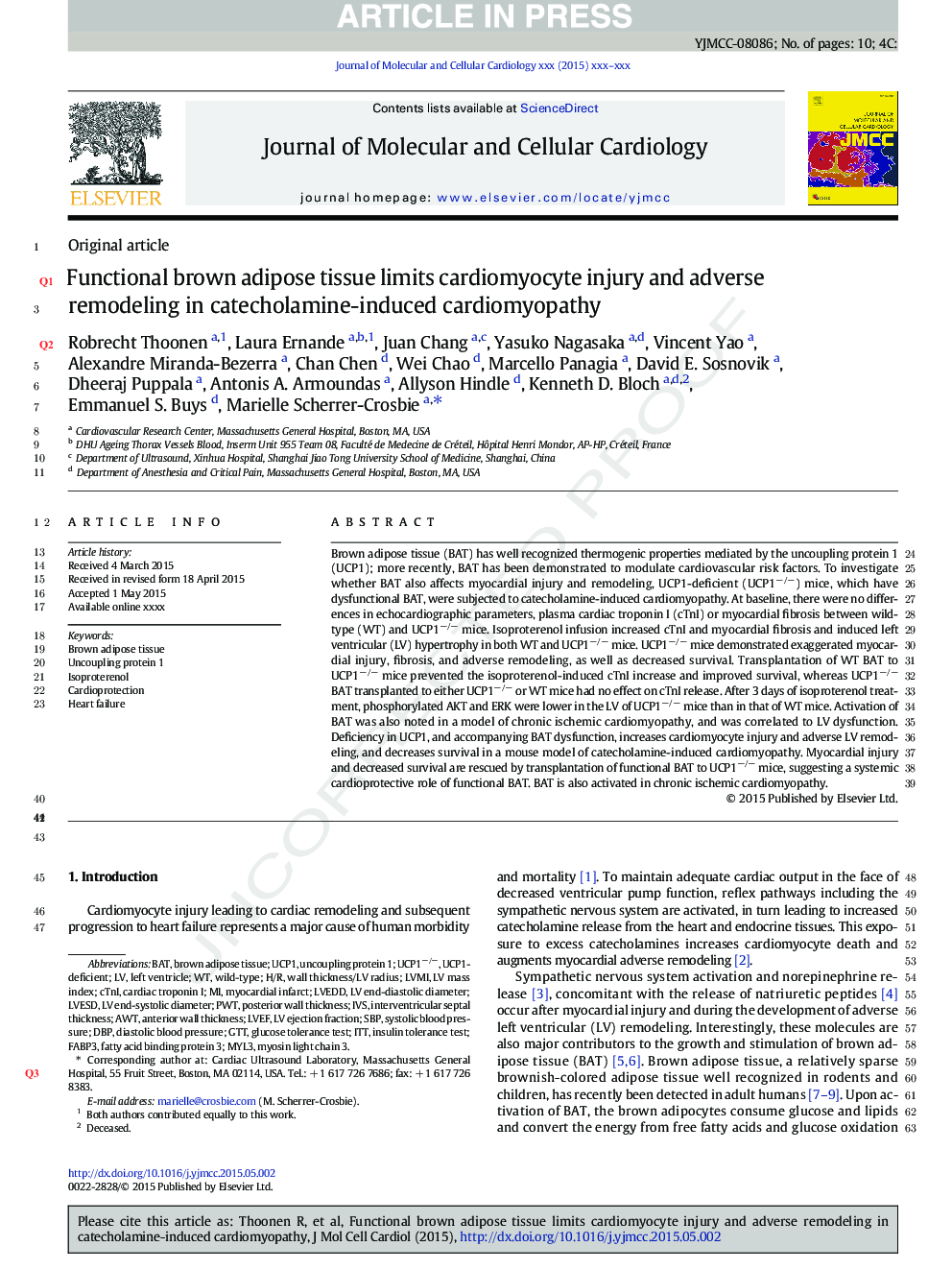| Article ID | Journal | Published Year | Pages | File Type |
|---|---|---|---|---|
| 8474284 | Journal of Molecular and Cellular Cardiology | 2015 | 10 Pages |
Abstract
Brown adipose tissue (BAT) has well recognized thermogenic properties mediated by uncoupling protein 1 (UCP1); more recently, BAT has been demonstrated to modulate cardiovascular risk factors. To investigate whether BAT also affects myocardial injury and remodeling, UCP1-deficient (UCP1â/â) mice, which have dysfunctional BAT, were subjected to catecholamine-induced cardiomyopathy. At baseline, there were no differences in echocardiographic parameters, plasma cardiac troponin I (cTnI) or myocardial fibrosis between wild-type (WT) and UCP1â/â mice. Isoproterenol infusion increased cTnI and myocardial fibrosis and induced left ventricular (LV) hypertrophy in both WT and UCP1â/â mice. UCP1â/â mice also demonstrated exaggerated myocardial injury, fibrosis, and adverse remodeling, as well as decreased survival. Transplantation of WT BAT to UCP1â/â mice prevented the isoproterenol-induced cTnI increase and improved survival, whereas UCP1â/â BAT transplanted to either UCP1â/â or WT mice had no effect on cTnI release. After 3Â days of isoproterenol treatment, phosphorylated AKT and ERK were lower in the LV's of UCP1â/â mice than in those of WT mice. Activation of BAT was also noted in a model of chronic ischemic cardiomyopathy, and was correlated to LV dysfunction. Deficiency in UCP1, and accompanying BAT dysfunction, increases cardiomyocyte injury and adverse LV remodeling, and decreases survival in a mouse model of catecholamine-induced cardiomyopathy. Myocardial injury and decreased survival are rescued by transplantation of functional BAT to UCP1â/â mice, suggesting a systemic cardioprotective role of functional BAT. BAT is also activated in chronic ischemic cardiomyopathy.
Keywords
PWTLVESDLV end-systolic diametercTnILV end-diastolic diameterLVEDdIVSLV mass indexLVMILVEFMYL3BATAWTGTTFABP3DBPSBPH/RUcp1insulin tolerance testMyocardial infarctisoproterenolITTbrown adipose tissueleft ventricleglucose tolerance testCardioprotectionposterior wall thicknessInterventricular septal thicknessdiastolic blood pressuresystolic blood pressurecardiac troponin Iheart failurewild-typefatty acid binding protein 3uncoupling protein 1LV ejection fraction
Related Topics
Life Sciences
Biochemistry, Genetics and Molecular Biology
Cell Biology
Authors
Robrecht Thoonen, Laura Ernande, Juan Cheng, Yasuko Nagasaka, Vincent Yao, Alexandre Miranda-Bezerra, Chan Chen, Wei Chao, Marcello Panagia, David E. Sosnovik, Dheeraj Puppala, Antonis A. Armoundas, Allyson Hindle, Kenneth D. Bloch, Emmanuel S. Buys,
